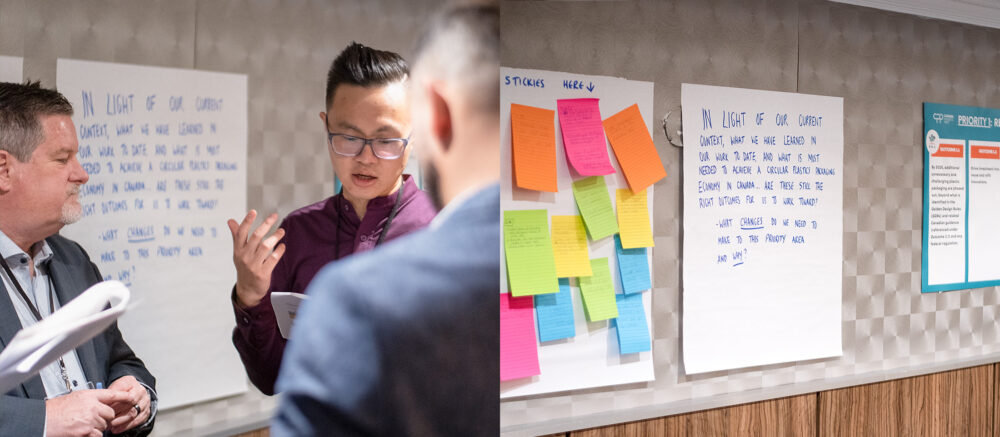
Jan 23, 2024
There are plenty of reasons why we use plastic packaging on a daily basis. It’s affordable. It’s versatile. It can seal out water, moisture and light, protecting the product underneath. And because it’s lightweight, it cuts down on transportation, saving money and greenhouse gas emissions.
But far too much of it ends up in landfills or as litter on land and in our oceans. Meanwhile, microplastics are found everywhere from remote Arctic ecosystems to our own bloodstreams.
Alternative packaging solutions can bring their own disadvantages. They may require more energy to produce. They may be heavier, increasing CO2 emissions during transport. And when it comes to food packaging, non-plastic alternatives may allow the product to spoil quicker, wasting all the resources that went into its production.
So how do we reduce both the volume and the impact of plastic waste? It’s complicated but it’s possible. And that’s why the Canada Plastics Pact (CPP) exists.
Today, the CPP is finding workable ways to reimagine the system, including particularly thorny issues like flexible plastics. “We want to keep plastic in the economy. We don’t want to see it in the natural environment,” says Cher Mereweather, the organization’s managing director. “We appreciate that it’s complex, but we are committed to working together, because wicked problems cannot be solved in isolation.”
The Pact brings together nearly 100 key stakeholders across the entire plastics value chain. They include major retailers like Loblaw Companies Limited, Canadian Tire and Walmart Canada; consumer goods companies like Nestle, General Mills and Coca-Cola Canada. There are companies involved in raw material production, manufacturing and waste management. And there are trade associations, environmental organizations, government bodies and academic institutions.
Together, they’ve developed a roadmap for creating a circular economy for plastic packaging in Canada, grounded in the latest data and informed by industry experts.
The latest version — set to be released in spring 2024 — lays out four key priorities. One is preventing waste in the first place by reducing, reusing and redesigning consumer goods. The second is optimizing the infrastructure required for reuse, refill and recycling systems through measures like standardizing packaging designs and investing in new technologies.
Another priority is making sure the right data is available to enable systemic change. This includes helping retailers better track the amount and kind of plastics going out their door, for example, and how much of it ends up as waste. Or it could mean understanding the life cycle of materials to ensure that potential solutions are actually effective. The final priority is sharing the knowledge and lessons learned along the way.
At the same time, the Pact is establishing “accelerator pods” that bring together key players and leverage strategic investments to develop and scale solutions, such as reusable and refillable alternatives to conventional packaging. “Because if you say no to something, we need other things to say yes to,” explains The Natural Step’s Sarah Brooks, who serves as an advisor to the Canada Plastics Pact.
Reimagining the entire plastics value chain for such a ubiquitous material is a huge undertaking. But for the CPP, the key is having committed partners at the table who understand what’s at stake and are willing to do the hard work. “That’s the power of the community,” Mereweather says.
